Japanese tattoos have a rich history and are known for their intricate and symbolic designs. Each element in the tattoo holds a special meaning and tells a unique story. In this article, we will explore some of the most popular mythological creatures, animals, flowers, and other symbols found in Japanese tattoos.

Kingyo (Goldfish)
In Japan, goldfish are seen as symbols of good luck and prosperity. They are often depicted swimming in ponds or bowls and are a popular choice for tattoos.
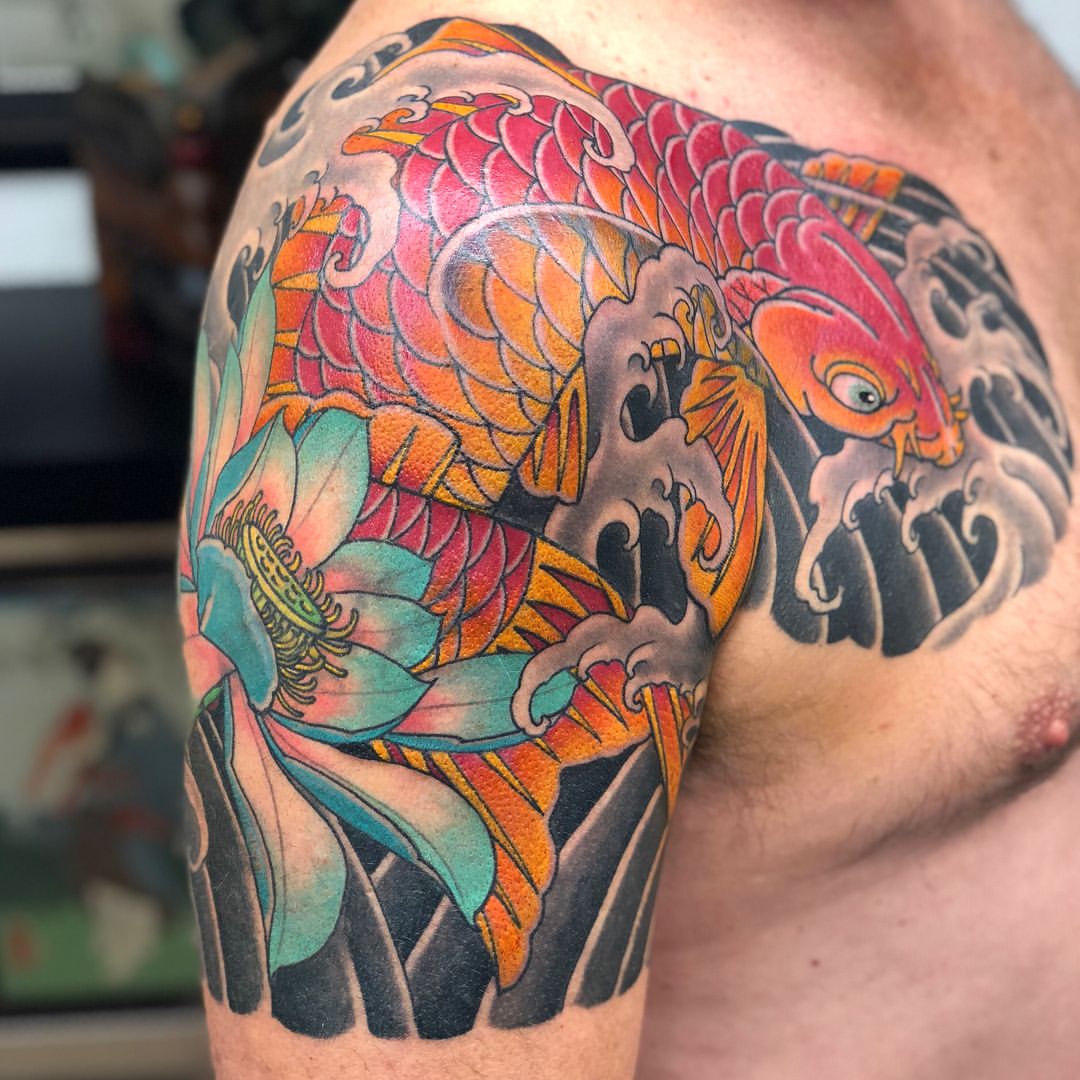
Koi
Koi fish are another popular tattoo subject in Japanese culture. They are known for their strength and determination as they swim upstream, against the current. Koi tattoos symbolize perseverance and overcoming adversity.
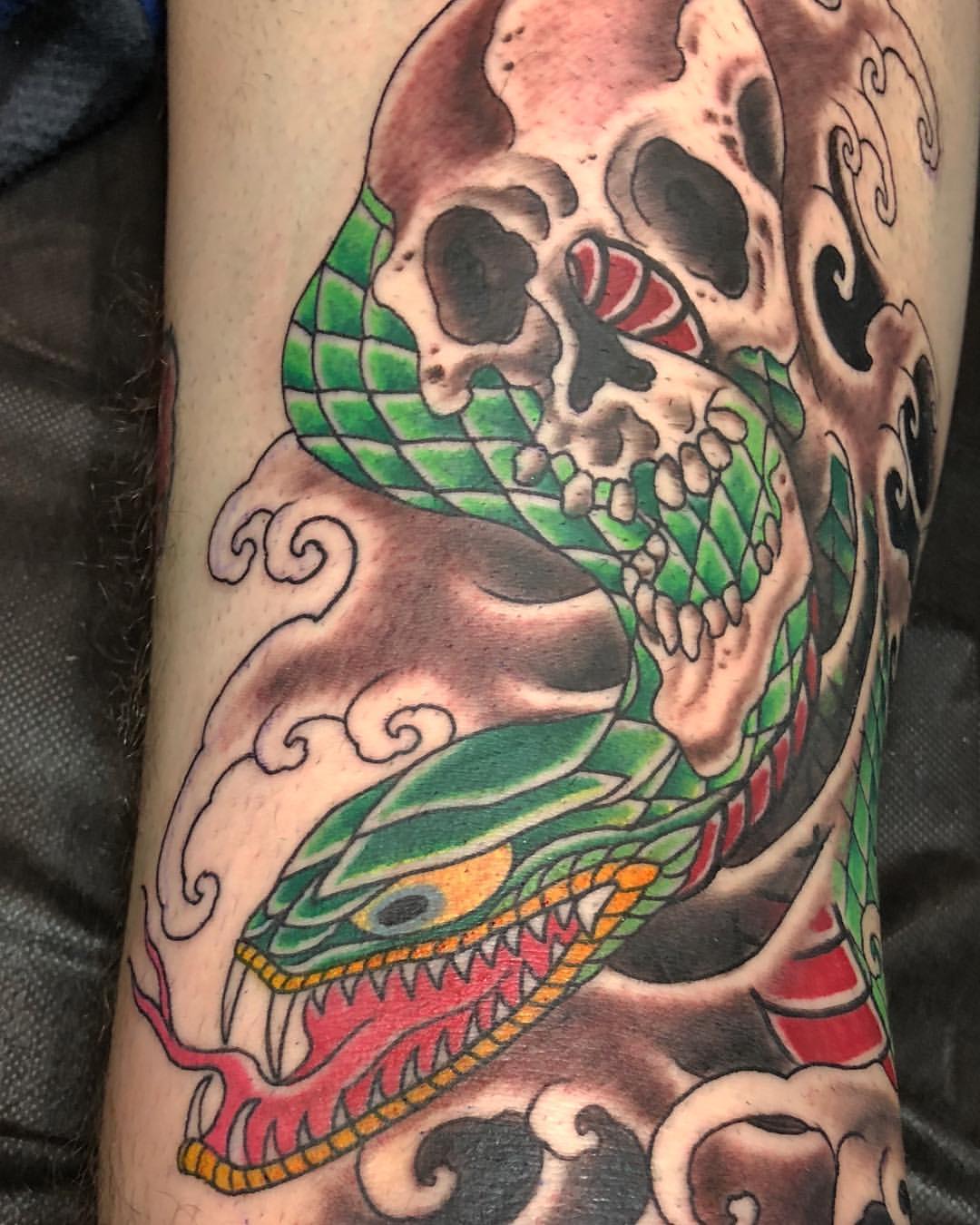
Snakes
In Japanese mythology, snakes are revered as divine beings. They represent fertility, regeneration, and rebirth. They are often depicted as guardians of shrines and temples and are associated with healing and protection.
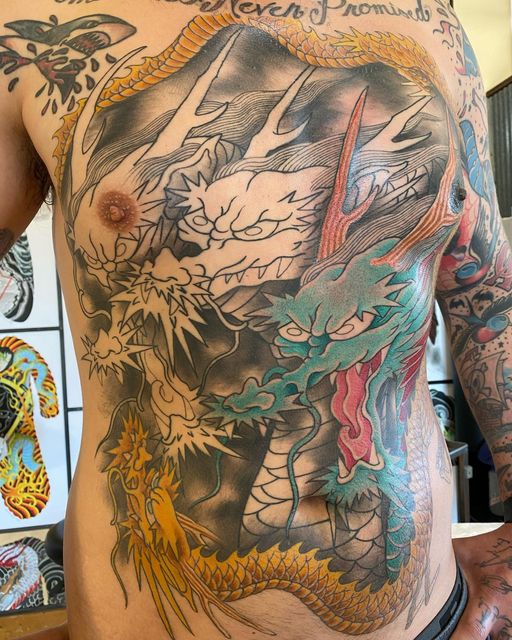
Dragons
Dragons are one of the most recognizable creatures in Japanese mythology. They are powerful and majestic beings that symbolize strength, wisdom, and good luck. They are often depicted with clouds and water, representing their control over the elements.
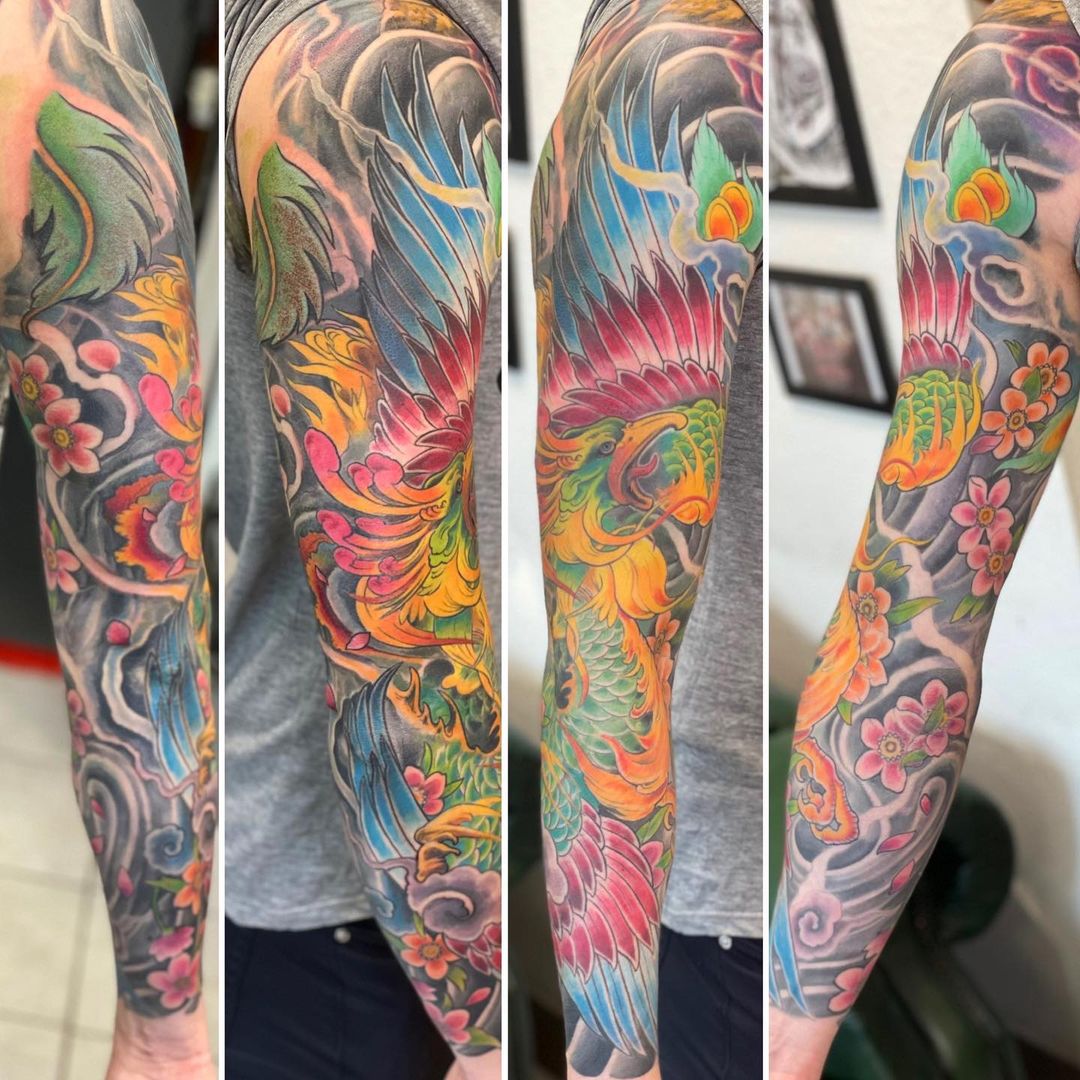
Phoenix
The phoenix is a mythical bird that is said to rise from its own ashes. It represents rebirth, renewal, and regeneration. It is often depicted with flames and is a popular tattoo subject for those seeking a fresh start.
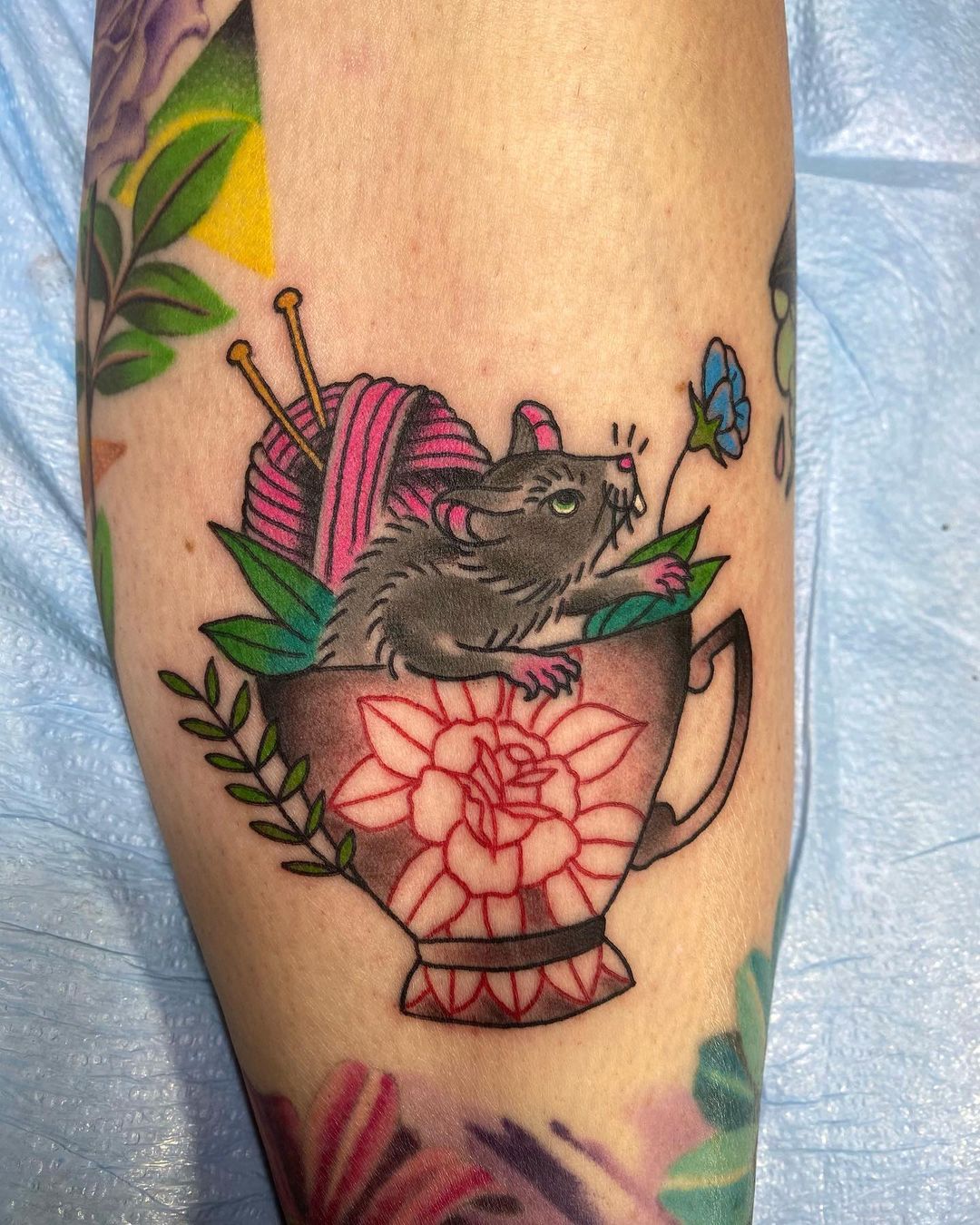
Rats
In Japanese culture, rats are seen as symbols of good fortune and success. They are often depicted with coins or other forms of wealth, representing prosperity and abundance.

Rabbits
Rabbits are associated with the moon in Japanese mythology and are seen as symbols of good luck and longevity. They are often depicted with the moon, cherry blossoms, or other symbols of spring and renewal.

Chrysanthemums
Chrysanthemums are a popular flower in Japanese tattoos. They represent the sun, longevity, and perfection. They are often depicted in full bloom, representing a life lived to the fullest.
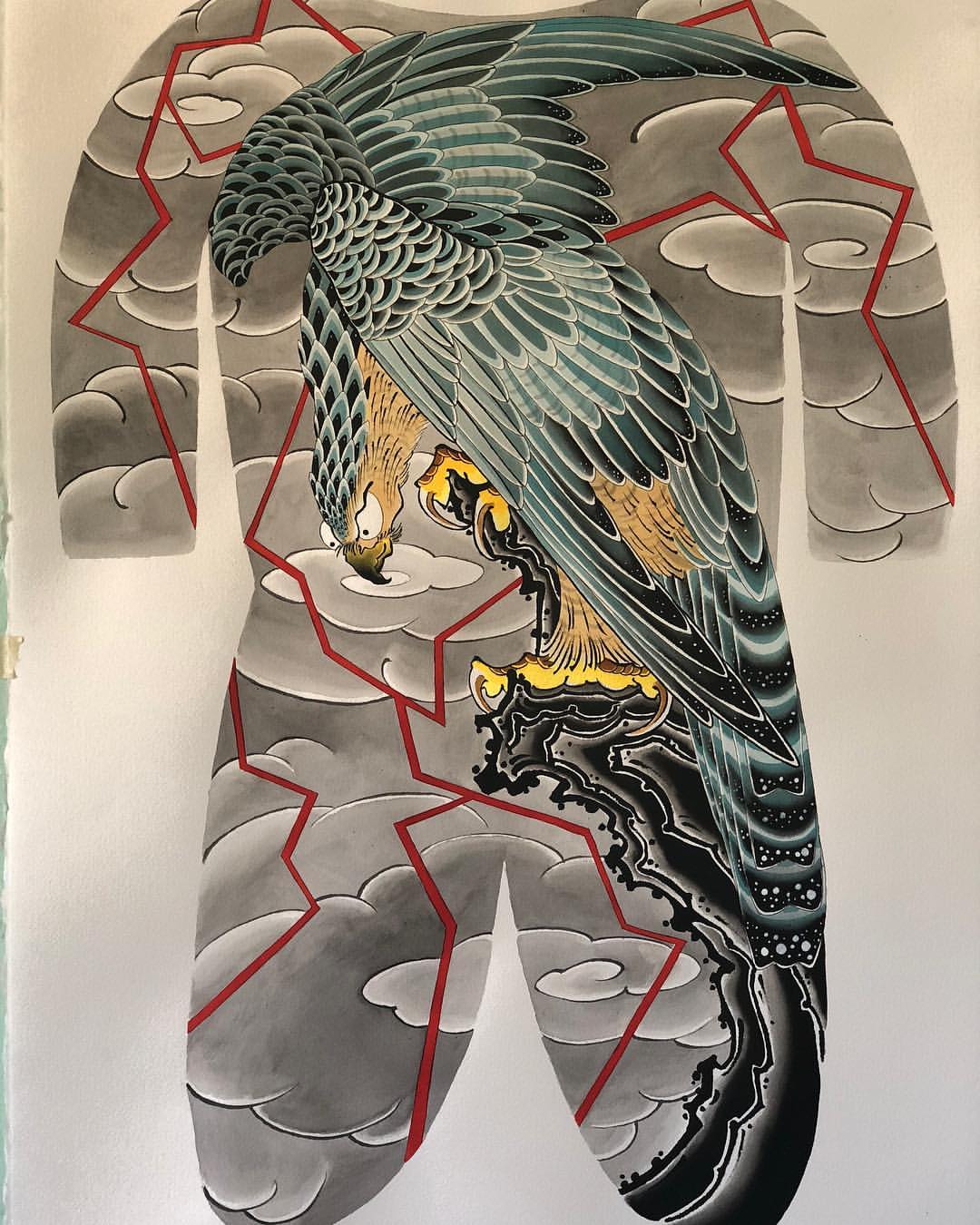
Hawks
Hawks are seen as symbols of strength, courage, and victory in Japanese culture. They are often depicted with other symbols of power, such as the sun or lightning bolts.
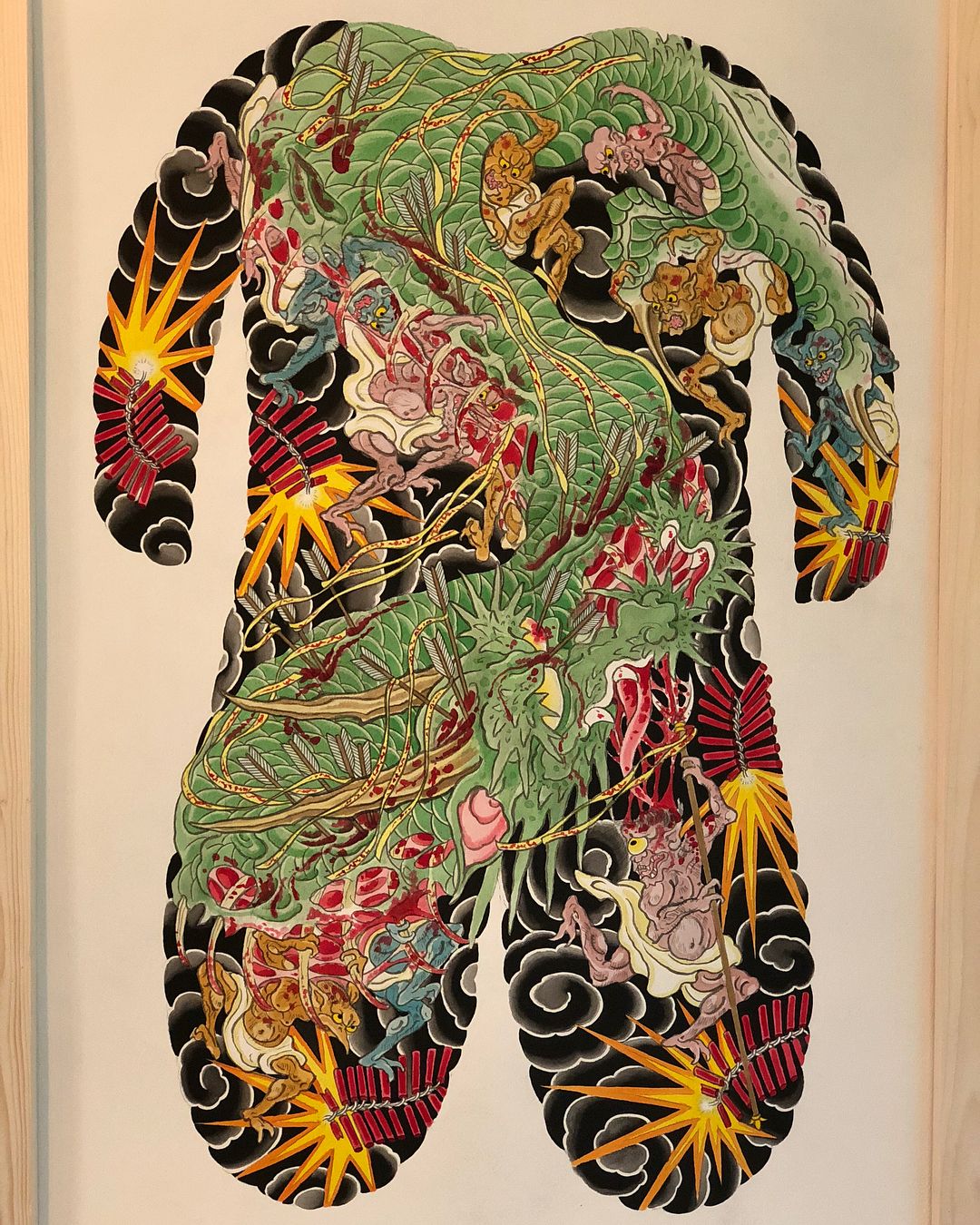
Hell Scenes
Hell scenes are a popular subject in Japanese tattoos. They depict the afterlife and the punishments that await those who have committed sins in life. They are often highly detailed and intricate, representing the severity of the punishment.
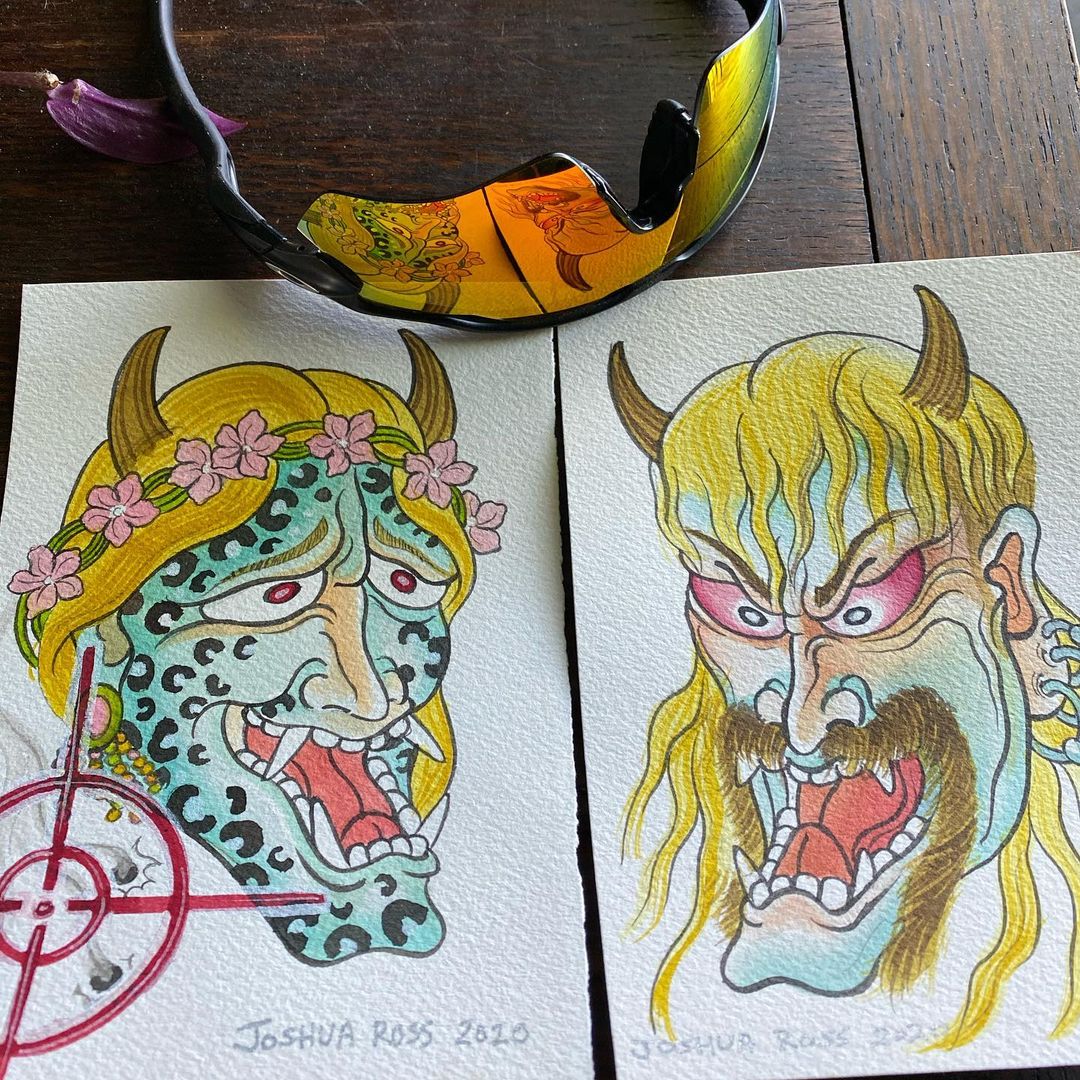
Hannya Masks
Hannya masks are often seen in Japanese theater and are also a popular tattoo subject. They represent a jealous and vengeful female spirit and are often depicted with a snarling mouth and sharp teeth.

Peonies
Peonies are a popular flower in Japanese tattoos, symbolizing wealth, honor, and good fortune. They are often depicted in full bloom and are associated with the spring season.

Fujin and Raijin
Fujin and Raijin are two powerful figures in Japanese mythology. Fuji is the god of mountains, while Raijin is the god of thunder and lightning. Together, they represent the power of nature and the strength of the mountains.
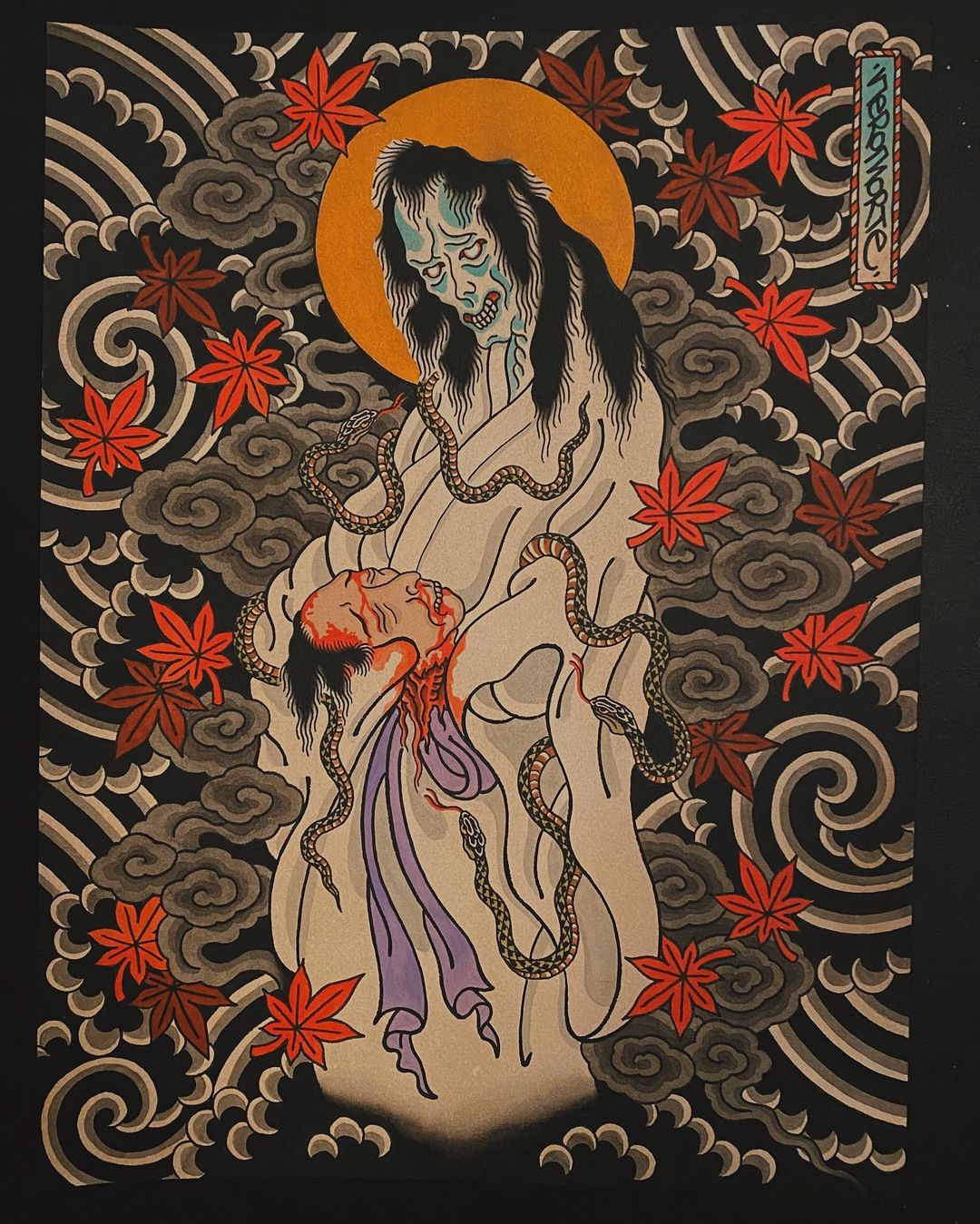
Ghosts
Ghosts are a popular subject in Japanese tattoos, representing the afterlife and the supernatural. They are often depicted with haunting expressions and ghostly apparitions.

Samurais
Samurais are iconic figures in Japanese history and culture. They are seen as symbols of loyalty, honor, and strength. They are often depicted with swords and armor, representing their warrior spirit.
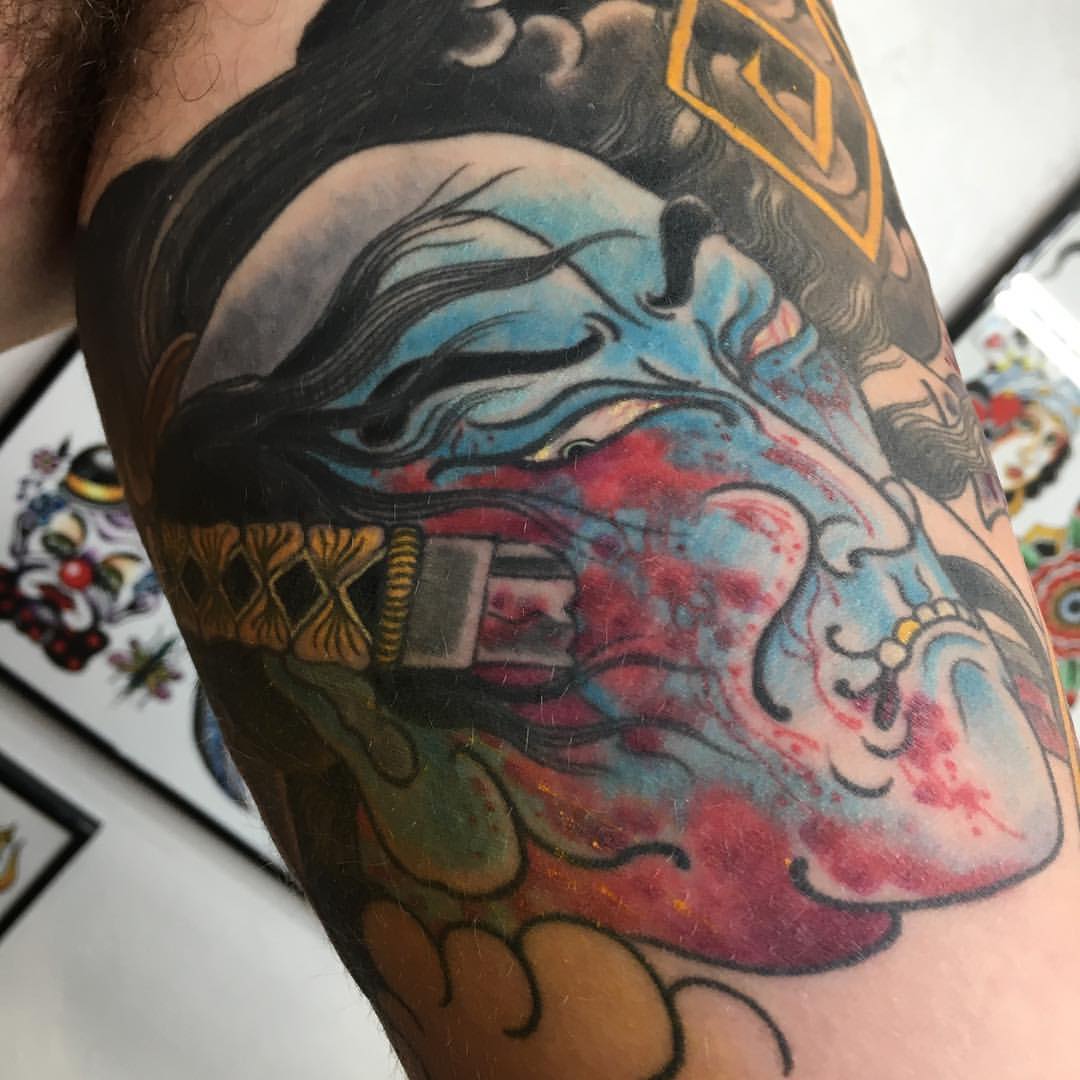
Namakubi
Namakubi is a severed head in Japanese mythology, often depicted in tattoos. It is a symbol of strength, courage, and the warrior spirit.
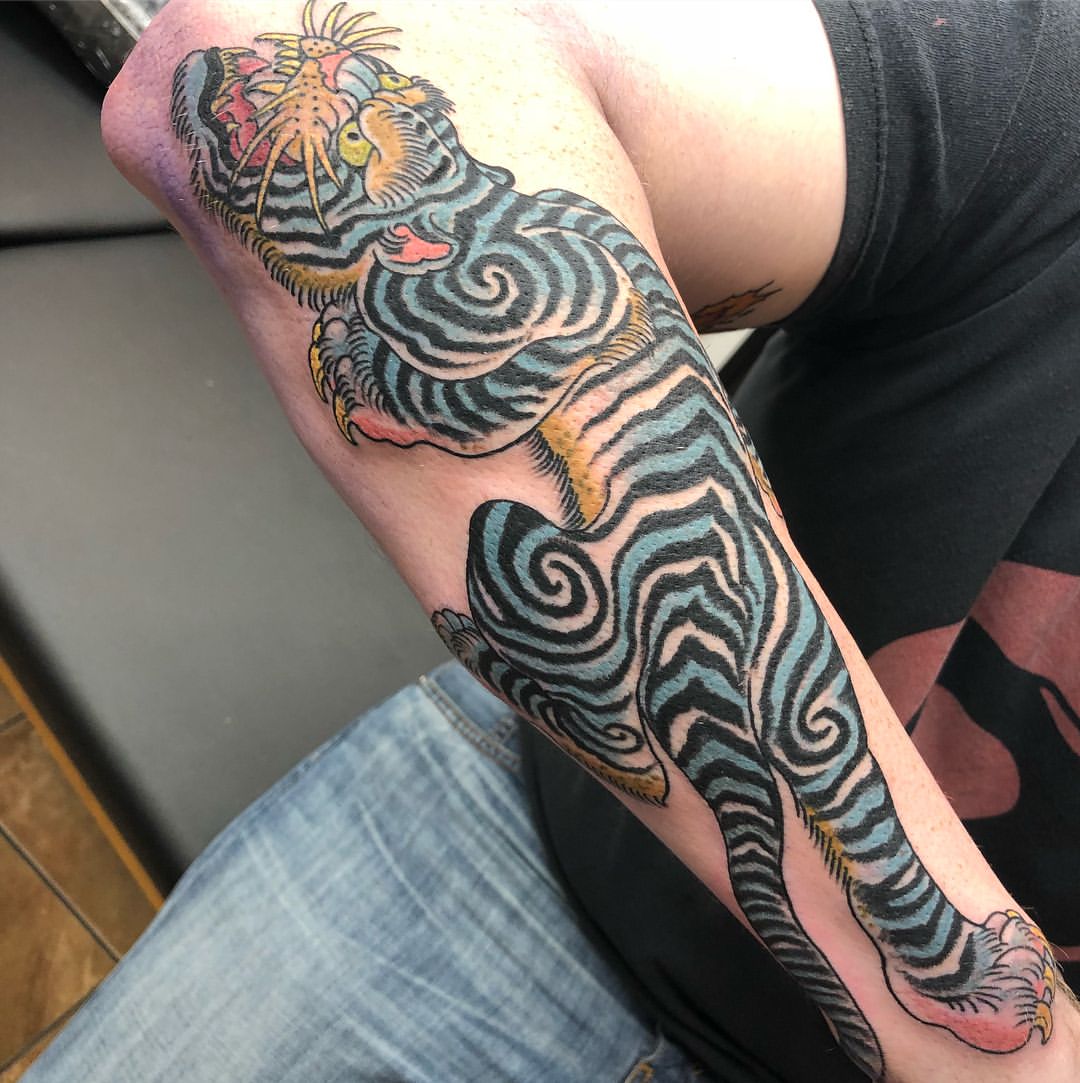
Tigers
Tigers are a highly regarded symbol in Japanese culture, representing strength, courage, and protection. They are often depicted in Japanese art as fierce, majestic creatures with bold stripes and piercing eyes. Tigers are also associated with autumn and the changing of seasons. In Japanese folklore, they are said to be protectors of the home and can ward off evil spirits. In addition to being a popular subject in Japanese tattoos, tigers are also featured in traditional Japanese festivals, such as the Kurama Fire Festival, where a large paper tiger is carried through the streets to ward off evil spirits.

Cherry Blossoms
Cherry blossoms are one of the most iconic symbols of Japanese culture. They represent the transience of life and the beauty of impermanence. They are often depicted in full bloom, with petals floating on the wind, and are associated with the spring season.

Demons
Demons are a popular subject in Japanese tattoos, representing the darker aspects of human nature. They are often depicted with grotesque features, sharp teeth, and horns, representing their evil nature. They are associated with the afterlife and the supernatural.
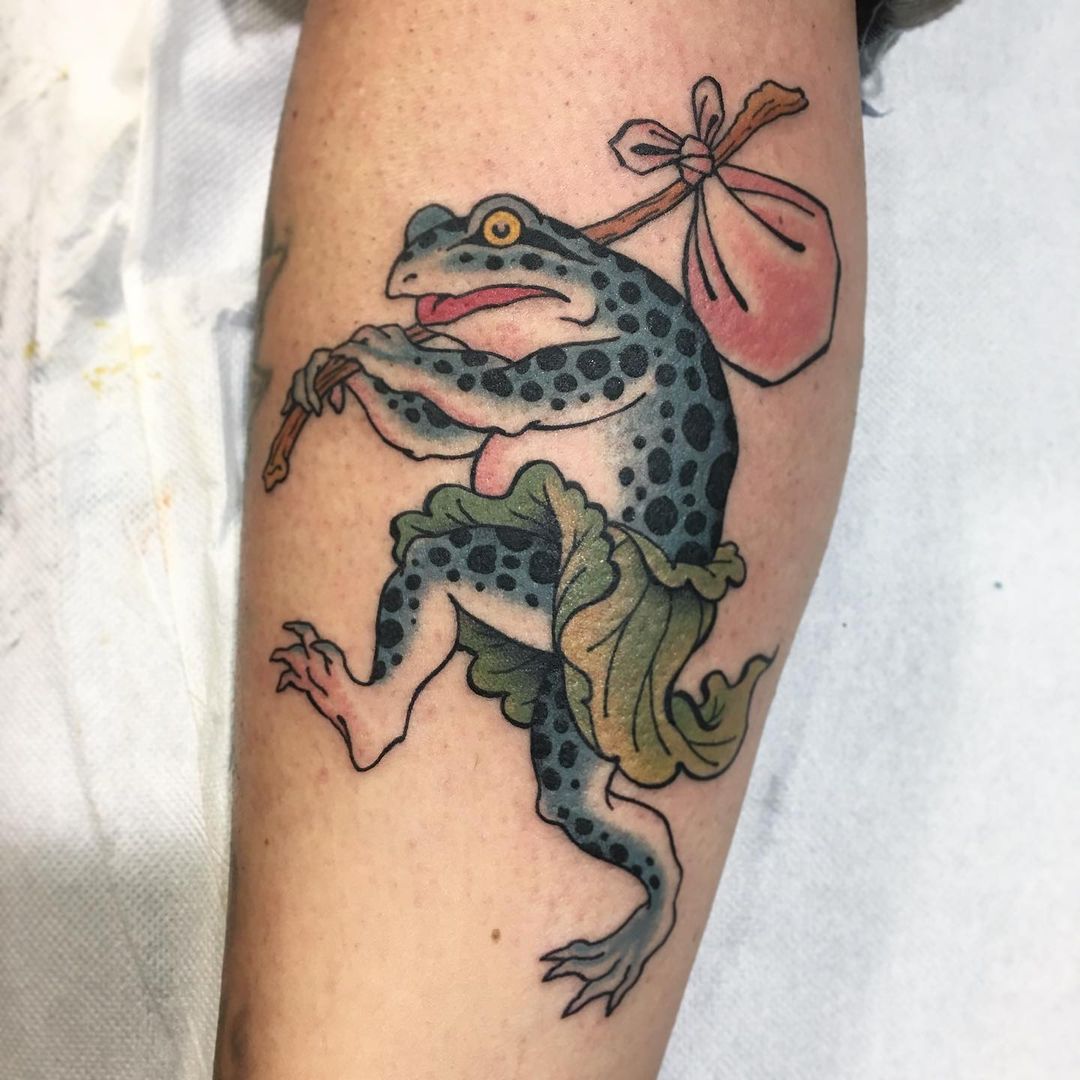
Frogs
Frogs are seen as symbols of good luck and prosperity in Japanese culture. They are often depicted with a coin in their mouth, representing wealth and abundance. They are also associated with the natural world, representing the balance between humans and nature.
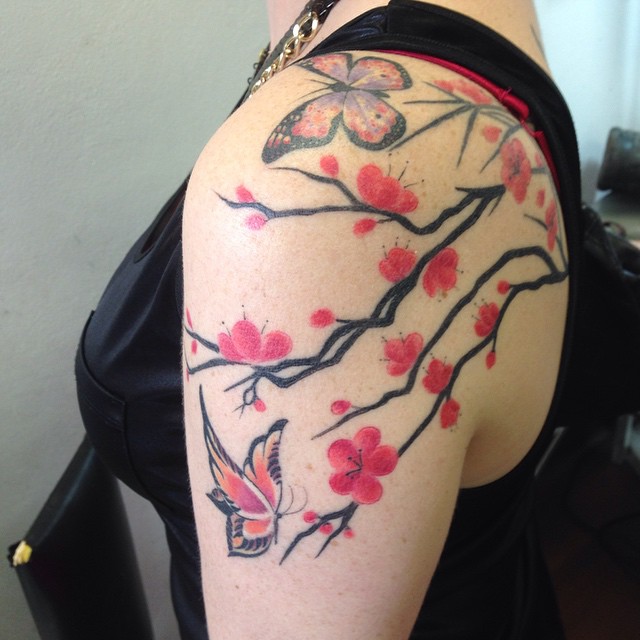
Chouchou (Butterflies)
Butterflies are a popular subject in Japanese tattoos, representing transformation and beauty. They are often depicted in vibrant colors, with intricate patterns on their wings. They are associated with the spring season and the renewal of life.
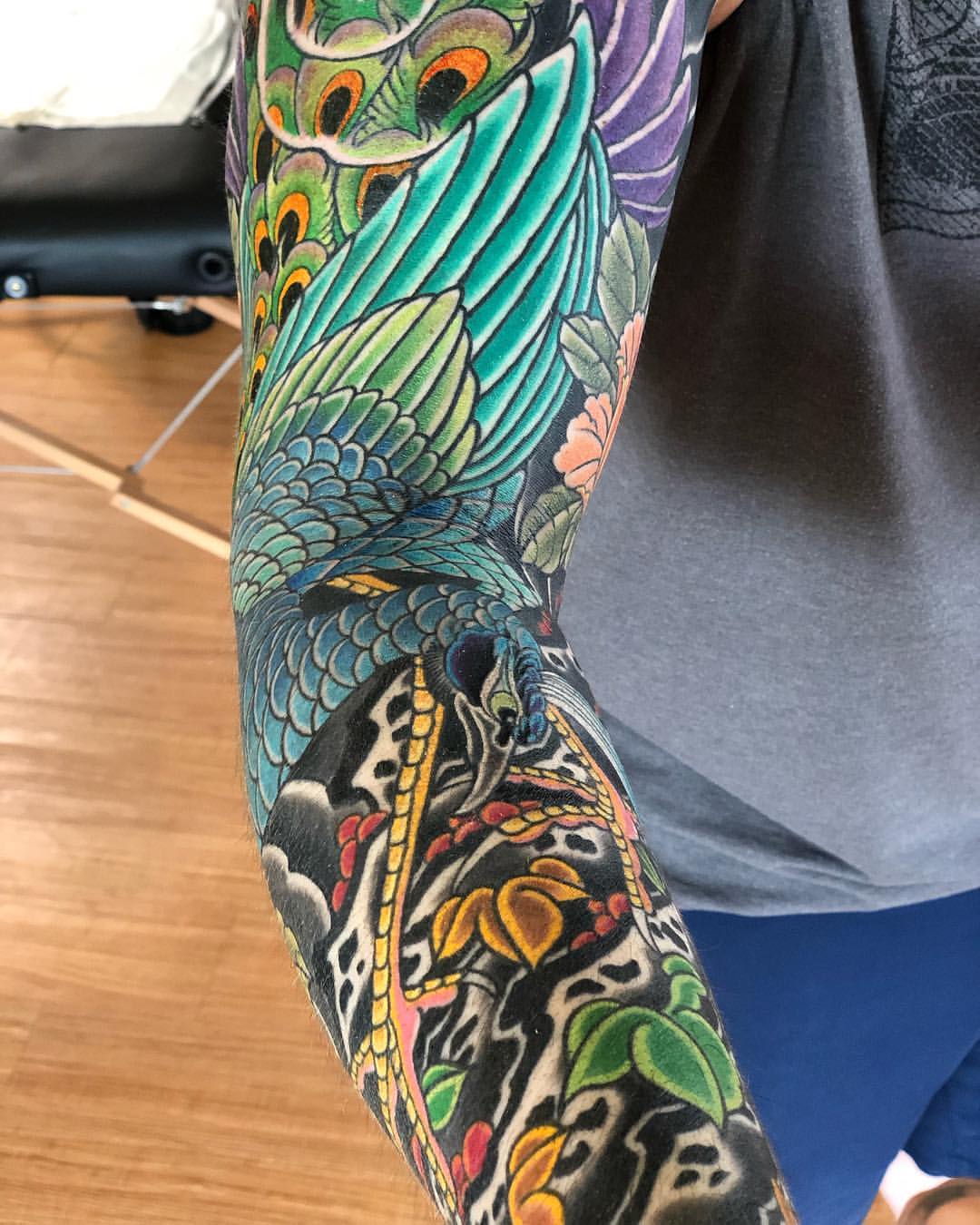
Peacocks
Peacocks are symbols of beauty and elegance in Japanese culture. They are often depicted with their feathers spread wide, representing their regal nature. They are associated with prosperity and good luck, and are a popular subject in Japanese tattoos.